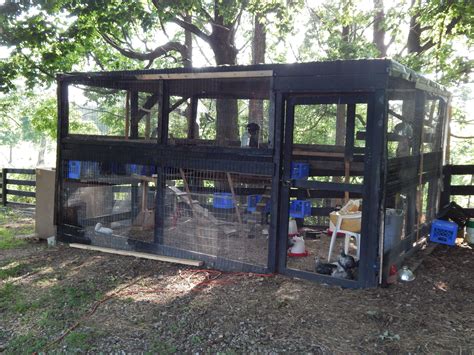The Best Kept Secret to Raccoon-Free Chicken Coops
Raccoons. Those masked bandits of the night. They're cunning, clever, and have a seemingly insatiable appetite for chicken eggs. Securing your chicken coop against these resourceful critters is a constant battle for backyard chicken keepers. While many solutions exist, from electric fences to complex locking mechanisms, the best-kept secret to raccoon-free chicken coops lies in a surprisingly simple, yet highly effective, approach: prevention through design. This means building your coop with raccoon-proofing in mind from the very beginning. Let's delve into the details.
Why Traditional Methods Often Fail
Before we reveal the secret, let's quickly address why common methods often fall short. Many chicken keepers rely on latches, locks, and even chicken wire, but raccoons are surprisingly adept at bypassing these security measures. They can:
- Bend or break flimsy latches: A determined raccoon can easily overcome weak points in your coop's locking mechanism.
- Climb over or through inadequate fencing: Chicken wire, while effective against smaller predators, is no match for a determined raccoon's climbing skills.
- Dig under fences: If there's any space beneath your fencing, a raccoon will find it.
So, what's the answer?
The Best Kept Secret: Predator-Proofing from the Ground Up
The most effective way to keep raccoons out of your chicken coop isn't about adding extra security after the fact; it's about building a coop that's inherently raccoon-resistant. This involves focusing on three key areas:
1. Hardware Cloth: The Foundation of Defense
Forget chicken wire. Hardware cloth, with its smaller mesh size, is the cornerstone of raccoon-proof construction. Use it to:
- Enclose the entire coop: Cover all walls, roof, and even the ground beneath the coop with hardware cloth, burying it several inches below ground level to prevent digging. This creates a complete barrier, preventing raccoons from accessing any entry points.
- Reinforce weak points: Use hardware cloth to strengthen existing structures or to patch any holes or gaps in the coop.
2. Secure Entry Points: No Gaps Allowed
Raccoons are masters of exploiting small openings. Therefore, meticulous attention to detail is crucial:
- Reinforced Doors and Windows: Use sturdy hinges and strong latches on all doors and windows. Consider using multiple locking mechanisms for added security.
- Eliminate Gaps and Cracks: Carefully seal any gaps or cracks around doors, windows, and other structural elements. Use expanding foam or caulking to create a seamless barrier.
- Roosts High and Secure: Ensure roosting bars are securely fastened and placed high enough to prevent raccoons from reaching them easily.
3. Solid Foundation: No Way In Underneath
Raccoons are adept diggers. Preventing them from burrowing under your coop is essential:
- Concrete Slab Foundation: A concrete slab provides an impenetrable base, preventing digging.
- Deep Burying of Hardware Cloth: As mentioned earlier, bury the hardware cloth several inches deep to deter digging.
Frequently Asked Questions (FAQs)
What if I already have a chicken coop? Can I retrofit it?
Yes, you can! Many aspects of raccoon-proofing can be retrofitted. Focus on adding hardware cloth to vulnerable areas, reinforcing existing structures, and sealing any gaps.
Are there any other animals I should be worried about?
While raccoons are common culprits, other predators like foxes, opossums, and weasels can also pose a threat. Building a coop that’s raccoon-proof will often deter many other small to medium-sized predators.
How much does hardware cloth cost?
The cost of hardware cloth varies depending on the size and gauge you purchase, but it’s a relatively inexpensive investment compared to the potential loss of your flock or eggs.
Is it really that effective?
Yes. By focusing on prevention from the ground up and using hardware cloth as your primary defense, you will significantly reduce the risk of raccoon attacks.
Conclusion: Proactive Prevention is Key
While there's no foolproof method to completely eliminate the possibility of a raccoon intrusion, designing your chicken coop with inherent raccoon-proofing in mind is the most effective and long-term solution. By investing the time and effort in constructing a secure coop using hardware cloth and paying close attention to detail, you can significantly improve your chances of enjoying a peaceful and productive chicken-keeping experience, free from the nightly raids of these masked marauders. Remember, prevention through design is the best-kept secret to raccoon-free chicken coops.

